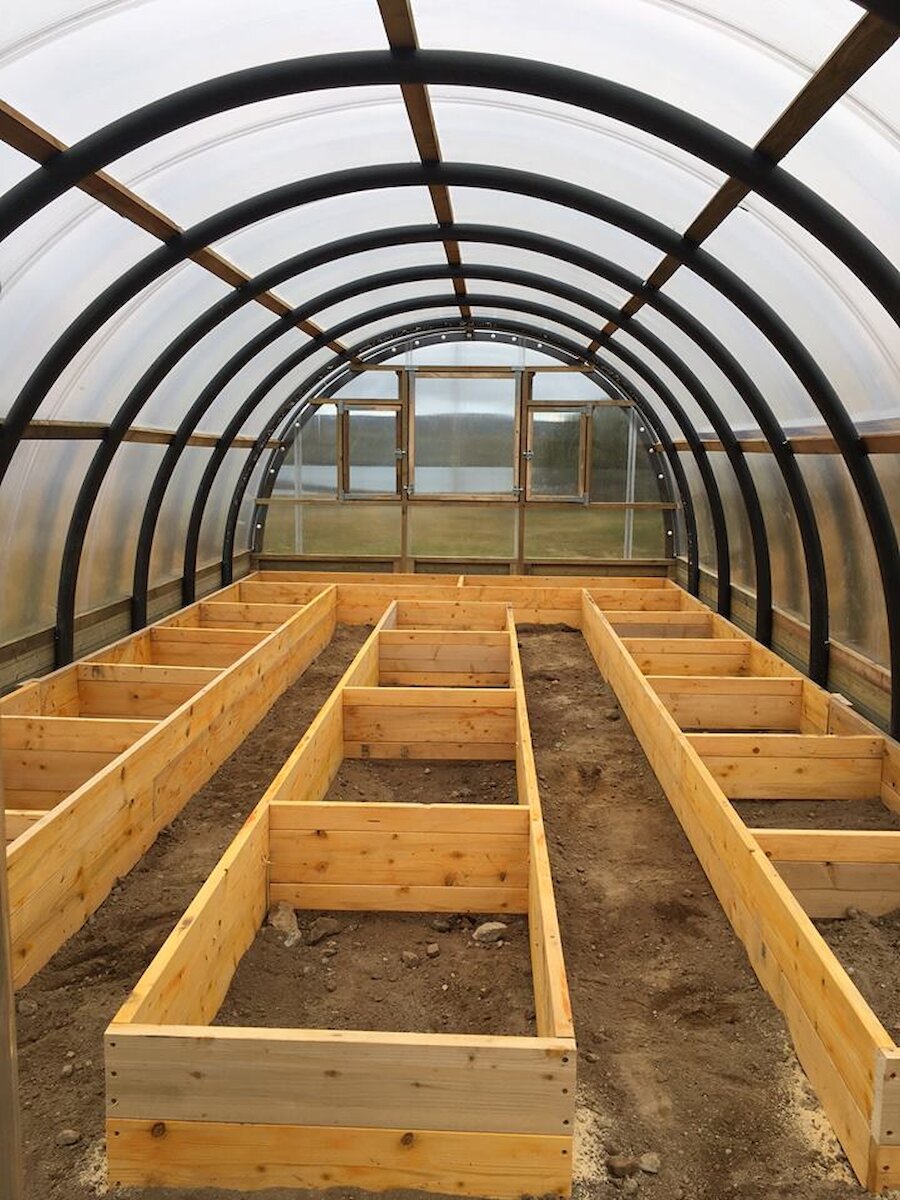The Hebrides already have quite a few polycrubs, as their qualities in providing a gale-proof growing environment have been well proven. Martin Adil-Smith is looking forward to making use of his Polycrubs, on his croft at Seaview in Knockaird, near the Butt of Lewis, reckoned to be the windiest place in Britain. He regards the grant aided polycrubs as vital to his development plans:
"That Rural Payments have now acknowledged the unmitigated benefit that the Polycrub brings to crofters is testament to the fortitude and diligence of both Nortenergy and Rob Black at SAC consulting who successfully navigated the CAGS progress on our behalf,” he said. “The Polycrub is an essential part of croft diversification and offers a substantial horticultural opportunity to all.".
The Polycrub design, which tensions twin-walled polycarbonate sheeting against the recycled feed pipes, has been developed over the past nine years so that it is now capable of withstanding “strong winds, snow and frost, collisions from airborne debris and vandalism”. Even the earliest, experimental examples are still proudly in use, having dealt with everything from full-on hurricanes to accidental collisions with flying wheelbarrows.
So how did it all begin? Drew remembers that NCDC was “casting around for something that would produce a bit of revenue”, when the idea of producing some kind of polytunnel came up. But what would be strong enough to handle the extreme weather conditions of Shetland? There had been many instances of traditional polytunnels “losing their skins” in the teeth of a gale, and something stronger was evidently required.
“I remember a group of us went off in a minibus one weekend to look at polytunnels round and about Shetland,” says Drew. “We didn’t see anything that was quite what we had in mind but one had used polycarbonate sheets and one had recycled salmon pipe as supporting hoops.
“We came back and designed something which used those ideas, and the notion of using second-hand salmon-farm pipe to make the hoops in the Polycrub was especially appealing, because there was a surplus in Shetland of used salmon pipe. And that was the original design.”
The pipes used in the Polycrub design come from feeding systems. In their original role, after a certain period of time feed pipes’ insides become rough and eroded, and so unsuitable for highly precise feed-supply work. They do remain very robust, though – indeed almost indestructible. The pipes, all donated freely to the project by the salmon industry in Shetland, also act as a thermal store for heat absorbed through the polycarbonate surface of the ’crub.
The original Polycrubs were built, says Drew, “according to an idea rather than an actual design”, but there have been constant improvements over the years.
“Through I guess basically word of mouth, news of them just got out. The most remote and distant ones we have now are in the Falkland Islands – we’ve sent two to the Falklands and there have been more enquiries from as far away as Tristan Da Cunha. There’s a lot in Orkney and the Western Isles – they’re just incredibly suitable for places that experience high winds.”
So what is the basic design of a Polycrub? Essentially, the salmon pipe is cut to lengths suitable for providing a hoop-shaped support for four- or three-metre wide units. They’re the ‘rafters’ of the structure. Longitudinal wooden purlings support the polycarbonate sheets and are attached to the plastic pipes. At the end hoops, round posts are inserted into the pipes and concreted into the ground. The bottom edges are finished in wood, the ends and the doors with wood and polycarbonate. The result is in the shape of a Nissen hut, which was specifically designed so that the wind pushes it down rather than lifts it up.
There’s no sign that the supply of recyclable salmon feed pipes – around 25 kilometres of which have so far been saved from landfill – will dry up. According to Drew: “The salmon industry is in the Western Isles and down the western seaboard of Scotland too, so it looks as if, unless they change the way they do things radically, I would think there will be a good supply ongoing in the future. You could buy new pipe, obviously, but it seems ecologically sound and more in the spirit of combatting climate change if you can use recycled material.”
Further details:
Read more about Polycrubs at nortenergy.co.uk and follow Nortenergy on Facebook – Facebook.com/polycrub. AMK is at amkplantandtipperhire.co.uk

